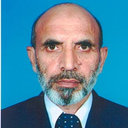Optical Screening of Female Breast Cancer from Whole Blood Using Raman Spectroscopy.
Avainsanat
Abstrakti
This study is intended to develop a screening method for female breast cancer (BRC) from whole blood using Raman spectroscopy. A multivariate partial least squares (PLS) regression model is developed which is based upon Raman spectra of BRC-positive and healthy participants. It yields coefficients of regression at the corresponding Raman shifts. These coefficients represent the changes in molecular structures which are associated with the progress of disease. The present study pointed out some specific molecules which differentiated BRC-positive and healthy groups. In the BRC-positive group, a rising trend of calcium oxalate, calcium hydroxyapatite, phosphatidylserine and qunoid ring, and a lowering trend of tryptophan, tyrosine, and proline were observed in PLS-based coefficients of regression. The R-square value of the model was found to be 0.987, which is accepted clinically. The model was tested for the prediction of 50 randomly collected samples at a cutoff value of 0.5 with the gray region defined in the range of 0.4-0.6. Goodness of fit was estimated using accuracy, sensitivity, specificity, receiver operating characteristic (ROC) curve, and area under ROC curve. All of these parameters were found to be very promising.




